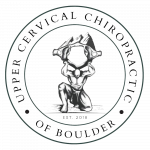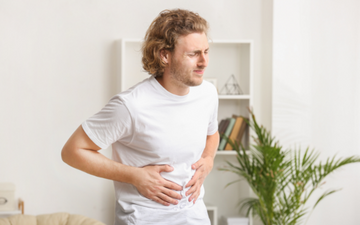What is Hernia Pain?
Hernia pain occurs when a disc in the spinal column bulges out or slips out of place. This is known as a herniated disc, or sometimes people call it a “slipped disc.”
The spinal column is made up of a series of small bones, or vertebrae. Between the vertebrae are intervertebral discs—small discs act as cushions between the bones. They work as little shock absorbers and prevent the bones from grinding against each other. When these discs crack, are torn, bulge out, or leak, they can cause a lot of problems.
Signs and Symptoms of Hernia Pain
A herniated disc can occur when you lift something heavy, make jerky twists or movements, are in a car accident, or suffer an injury during sports. Some people don’t have any symptoms or may have mild symptoms at the time of the injury. Without treatment, symptoms may come later or often get worse as time passes. You may not even realize your chronic back pain is due to a herniated disc from an injury that occurred a long time ago.
Hernia pain may cause sharp, stabbing pains. Herniated discs often cause neck pain, arm pain, and shoulder pain.
Depending on where the disc is located in the spine and how bad the herniated disc is, some patients may notice they feel pain or numbness in their extremities. This may present itself as a tingling, pins-and-needles feeling, or you may notice the muscles are weak and easily fatigued.
How the Upper Cervical Spine Affects Hernia Pain
The upper cervical spine consists of the seven uppermost vertebrae. These vertebrae begin just below the skull and run down the neck; they are responsible for holding up the weight of the head, head, and neck movement, and protecting the spinal cord and delicate nerve pathways that run down the neck.
When there is a herniated disc in the upper cervical spine, it can cause inflammation and swelling and may cause compression on the nerve roots. This disrupts the signals running through the central nervous system, causing numbness and pain. In more serious cases, herniated discs can cause balance problems and mobility issues.
Unfortunately, the upper cervical spine is a vulnerable area prone to injury. A jolt to the head, a twist of the neck, or even bad posture can cause misalignments of these vertebrae, resulting in herniated discs.
How Our Upper Cervical Spine Treatment Works
If you have nagging pain in the neck, upper back, arms, or shoulders, or if you experience numbness or weakness in your arm muscles, a herniated disc may be the problem. If you think you are suffering from a herniated disc, contact our upper cervical chiropractic specialists for help.
Dr. Christina Coblish and Dr. Ryan Moeskau of Upper Cervical Chiropractic of Boulder are experts in the Blair Chiropractic Technique. The Blair technique is a modern, non-invasive, safe chiropractic technique that focuses on the upper cervical spine.
Dr. Coblish and Dr. Moeskau use the most advanced diagnostic tools in 3D imaging to analyze the upper cervical spine and calculate misalignments. Then, using precisely placed, gentle force, the doctors can make swift, light corrections to help bring the spine back into alignment. This should alleviate any herniated disc pain, and allows your body’s natural healing processes to begin working.
Our goal is to treat the root cause of the problem so that your body can feel better and resume its natural functions. Call us for a consultation. Our areas of coverage include Boulder, Longmont, Louisville, Erie, Lafayette, Broomfield, and Denver in Colorado.


